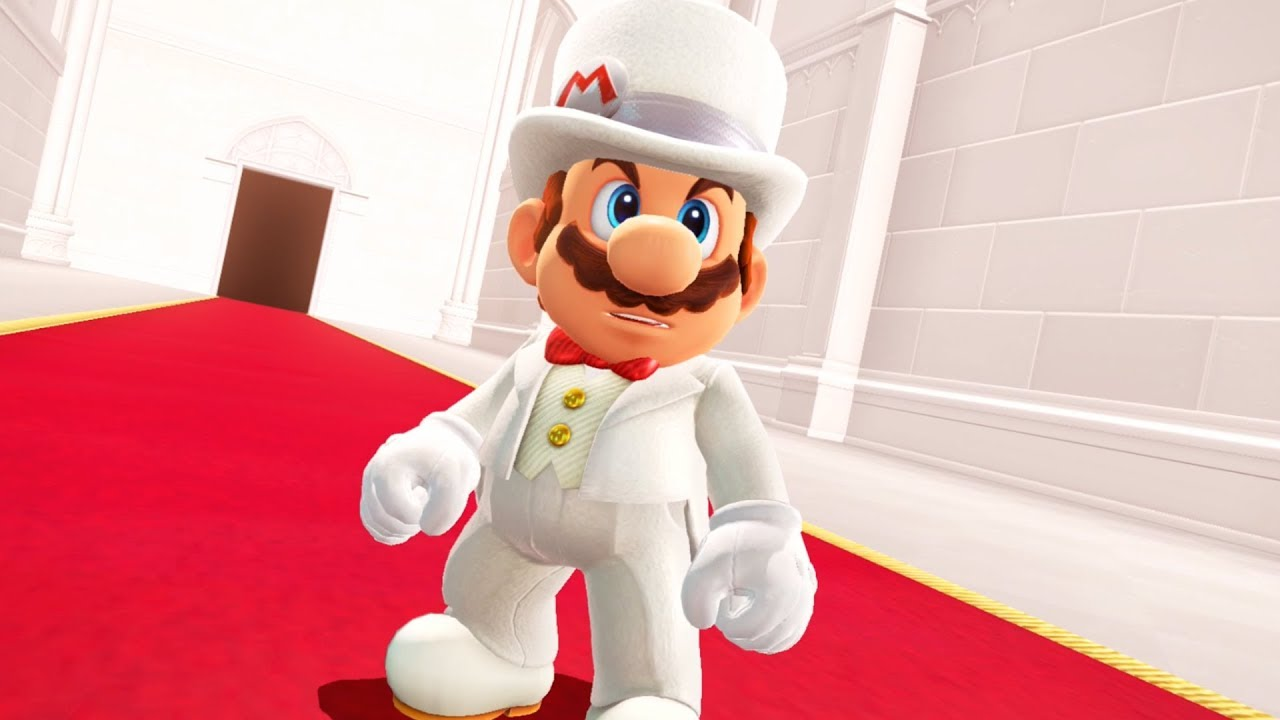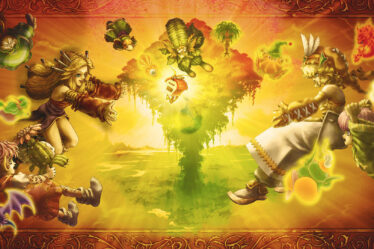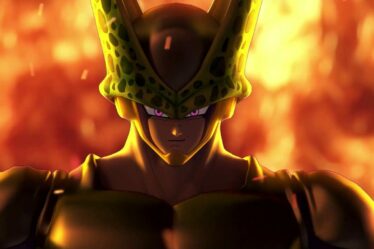
For many, Super Mario represents a sort of wide-open window directly into childhood, but for Nintendo, which has always been at the forefront of innovation in the gaming industry, it’s primarily a delicate testing ground. While it’s true that over the years the series of three-dimensional platformers starring the mustachioed, overweight hero has consistently hovered at the edges of excellence even when the scene was populated by fierce competitors, it’s also worth considering that within that realm of “beautiful games,” various nuances can be distinguished. These nuances are crucial when it comes to convincing someone to open their wallet and invest the classic fifty euros (when lucky) to experience them firsthand.
In short, Super Mario Odyssey finds its place among the aforementioned realm of beautiful games, but not among the revolutionary titles, nor among those I’ve loved the most.
The Nintendo Switch exclusive is undoubtedly a title designed to appeal to everyone – absolutely everyone – to the point of almost feeling “guided” to those who have loved the red and blue former plumber for almost thirty years. But let’s proceed in order. The narrative stratagem that this time justifies the bond between Mario and the game’s gimmick (the ability to take control of enemies) translates into the most classic Nintendo narrative cliché: Bowser, in a more elegant attire than usual, kidnaps not only Princess Peach but also the unwitting sister of Cappy, a talking, shape-shifting cap who, unsurprisingly, finds himself called upon to help our hero in his adventure. And so, after a very brief introductory parenthesis, one finds oneself exploring a multitude of kingdoms in pursuit of the historical enemy, traversing multiple environments characterized by… to say the least, bold artistic choices. Mario moves with an agility never seen before (and a responsiveness to commands that is almost miraculous), also leveraging the presence of his partner in crime, although curiously some available moves can only be performed by playing with the two Joy-Con disconnected from the console. In any case, it’s possible to conclude the adventure and tackle much of the final sections dedicated to “hardcore” players without feeling their absence.
JUMP UP, DON’T BE SCARED
The artistic direction is decidedly more casual than in the past, and while it’s true that one often finds themselves moving through levels with the traditional cartoony taste, there are also contexts where the imagery is decidedly less conventional for the saga. With the subtitle “Odyssey,” Nintendo clearly wanted to convey that now, more than ever before, the adventure would take greater aesthetic liberties, but personally, I found some combinations really pushing the boundaries of digestibility, despite understanding their intentions. That said, overall Nintendo’s production is configured as a classic three-dimensional platformer, with a rather pronounced focus on exploration rather than stringing together perfect jumps. Its preference for prioritizing newcomers and casual players, becoming more complex as one progresses through levels, has often made me feel out of place, as if this iteration wasn’t aimed at players like me, but fortunately, the accessible challenges once reaching the endgame convinced me to firmly hold onto the controller until the last unlockable level. I’ve mentioned “levels,” but it would be better to explain how the game is divided: you move from one point to another on the planet using the spaceship that gives the game its name, and each explorable location represents a veritable amusement park full of challenges and things to do, perhaps by speaking with one of the strange inhabitants who populate it. The pace of progression is relaxed and primarily dictated by the player’s choices, who can decide at any moment to backtrack to a previous level to recover what they hadn’t done before.
If we overlook the vertical evolution of level design typical of episodes like Super Mario Sunshine, it’s equally true that Odyssey goes to great lengths to bring the universe of the Kyoto house into its traversable worlds. While many may recognize traces and influences of contemporary gaming in the latest Super Mario installment, in my opinion, the Switch exclusive stages one of Nintendo’s most blatant recycling efforts (call it, if you will, “self-referentiality”) across all its major IPs. This includes explicit tributes, such as the numerous costumes (unfortunately mostly of merely “cosmetic” value, except for one lone exception) that resurrect past incarnations of the mustachioed hero, as well as actual gameplay mechanics, sometimes appearing entirely out of context. You roll up like Samus, occasionally transform into nostalgic murals like Link in The Legend of Zelda: A Link Between Worlds, take on enemy powers akin to a new Kirby, or switch gravity in sessions reminiscent of the excellent (indeed) Super Mario Galaxy, eventually unlocking checkpoints and thus being able to teleport from one point to another within environments that, upon closer inspection, prove to be much less extensive and rich in genuinely entertaining activities than initially assumed. As far as I’m concerned, the best component of the level design only emerges when the title forsakes catering to everyone’s inability and sets aside Cappy’s “deus-ex-machina” abilities, Mario’s adventure companion; in other cases, there seems to be a desire to offer a kind of meager “consolatory extra” to those who master the protagonist’s maneuvers better, perhaps by hiding coins on elevated platforms that are difficult to reach.
Once the adventure is completed and Bowser is defeated (spoiler alert!), you can revisit the locations to discover new collectibles and, as mentioned, challenges to face: only at this point is something more granted in terms of the beloved pure platforming favored by older players, along with a higher level of challenge in battles with bosses, now confrontable in a more fierce manner.
What I want to emphasize, essentially, is that to see the end of the boredom tunnel represented by a story mode without spice (defeating a dragon has never been so simple) and a series of well-structured but absolutely “normal” levels when compared to the high quality standard Nintendo has accustomed us to, I had to endure several hours of gameplay, struggling to reach the post-game (also spurred on by positive reviews from colleagues and specialized critics) only to be greeted by cunning homages to Mario 64. Just for fun. Furthermore, as I’ve already mentioned, the emphasis of this production isn’t placed on reaching the end of a perilous level and thus claiming the customary “stars,” which used to mark a celebrated milestone with solemn fanfares and euphoric animations, but on engaging in a “collectathon” of coins, outfits, and “standard stars,” here represented by gleaming moons, which amount to an incredible sum of 999 (or 880, but you’ll have to discover the difference by playing).
While on paper this might translate into practically eternal longevity or a classic PR stunt of the “our game is bigger than The Witcher 3, Skyrim, and Xenoblade Chronicles X combined, hehe” series, the reality is that Super Mario Odyssey seems to have been designed to capture an audience deemed inherently incapable of maintaining attention for more than a few minutes, motivated to explore by incessant jingles and enthusiastic messages, as if the game were constantly trying to convince us that we’re doing “a great job.” When, in the past, such “great job” meant something entirely different. The major issue with this design choice, which remains justifiable from a purely commercial standpoint and akin to the practice of “easy achievements” or the self-gratification typical of free-to-play titles aimed at concealing the subsequent wave of microtransactions, is that when players are continually praised for accomplishing nothing truly virtuous, that same gratification quickly loses its meaning. The number of moons obtainable simply by jumping on a platform or performing a completely ordinary action is so ridiculous that it has inspired some people to create a Twitter account that, every 30 minutes, motivates its followers with a moon… simply for pressing the “follow” button. It wasn’t uncommon to see many players leave the game immediately after completing the story mode or the few exclusive post-game contents, proving that it’s not about the flaunted number of objectives, but the actual sense of gratification that can be derived from them.
THERE’S NO POWER-UP QUITE LIKE DANCING
If the level of challenge remains relatively the same throughout the adventure (excluding content beyond completing the story mode), it’s surprising to know that Mario Odyssey also offers the possibility to activate a special gameplay mode that further facilitates exploration. Personally, I can only recommend this to those who aren’t accustomed to gaming or who, like myself, have limited time to spend on collecting items. After all, even Super Mario has become one of those products where reaching the end credits is literally just a matter of time and not real skill (so much so that it’s impossible to get a Game Over and the concept of “available lives” has been completely abandoned). The use of the aforementioned facilitated mode isn’t penalized or signaled when opting to return to playing at the classic difficulty level, with health halved and the possibility of having one’s progress interrupted by occasional falls into the void. Personally, I can resist the pitfalls of pathological collecting, and since none of the five thousand outfits obtainable for Mario modify his abilities in any way (except for a rare exception that proves the rule), I can abandon the game after about fifteen hours and 550 “stars” in my pocket without feeling the weight of leaving a masterpiece unfinished on my conscience, especially because collecting some of these required solving puzzles and mini-games that I found frankly uninteresting.
As for the technical aspect, it’s noticeable how Odyssey, more than other titles in the Super Mario saga in the past, had to deal with the challenges of technological compromise, especially to achieve 60fps in portable mode. Despite this, and even considering the less ergonomic nature of the two Nintendo Switch joy-cons compared to the Pro Controller, in this case too, I couldn’t help but prefer the portable experience to the home one offered by the console in docked mode, thanks to the generous size of my television screen and the evident technical gap between Switch and current-gen consoles when it comes to cleanliness or graphical detail. So, even if in portable mode the dynamic resolution drops to even negligible figures in the most critical moments, I admit I didn’t suffer much carrying the console with me on the couch, for a walk, or on public transportation, because Nintendo rightly prioritized gameplay fluidity. The overall aesthetics are, as already mentioned, the most varied ever seen in a title of the saga, often risking coherence in favor of the “shocking value” of seeing certain atmospheres alongside the historic Nintendo brand. The final result is more appreciated for the many purely aesthetic details hidden here and there (there are entire Twitter accounts dedicated solely to collecting photos of birds found in the various exploratory worlds), but probably as a big fan of what is functional and not just “nice to look at”, I remained rather doubtful in the face of scenarios like those offered by New Donk City, where the obvious aesthetic dissonance between the protagonist and its inhabitants didn’t convince me at all. Nevertheless, there are definitely worlds more inspired than others, but the stylistic disconnect is so evident as to almost suggest an internal feud among the graphic designers engaged in the visual characterization of this very diverse three-dimensional platform.
The animation department, on the other hand, is highly successful and among the richest and most expressive ever seen in the series, immortalized at any time thanks to the photo mode (!) accessible with the directional pad. It’s also worth mentioning that Super Mario Odyssey hasn’t only followed in Sonic’s footsteps by presenting the juxtaposition of humans and humanoid cartoon heroes in metropolitan settings, but it has also offered two sung musical themes that have already won over the audience, so much so that one of them was heavily used for the gigantic advertising campaign set up to promote the game’s release. To be honest, I prefer the Japanese version of “Jump Up, Super Star”, but don’t tell anyone. The artistic effort is evidenced by a soundtrack that features over seventy tracks, including rearrangements of historic melodies and new compositions, but even in this case, apart from the sung themes, I believe there’s a lack of truly memorable melodies, to the extent that it led me to use the in-game music player to choose my favorite tracks even in levels that featured others.
Super Mario Odyssey aims to be like Super Mario 64, but it lacks the spark of the classic Nintendo 64 and the boldness to draw a line between those who can easily reach the end of the adventure and those who must instead strive to “git gud.” The 999 collectible moons represent only the calling card of a platformer that has clearly made accessibility a priority in game design, and completing it seems more a matter of available time than real dedication. Despite this, we are faced with an undeniably solid product crafted with love, certainly recommendable to a novice and young audience, but far from the glory of the Wii iterations of the franchise and not even remotely comparable to the title it so eagerly seeks to emulate.


